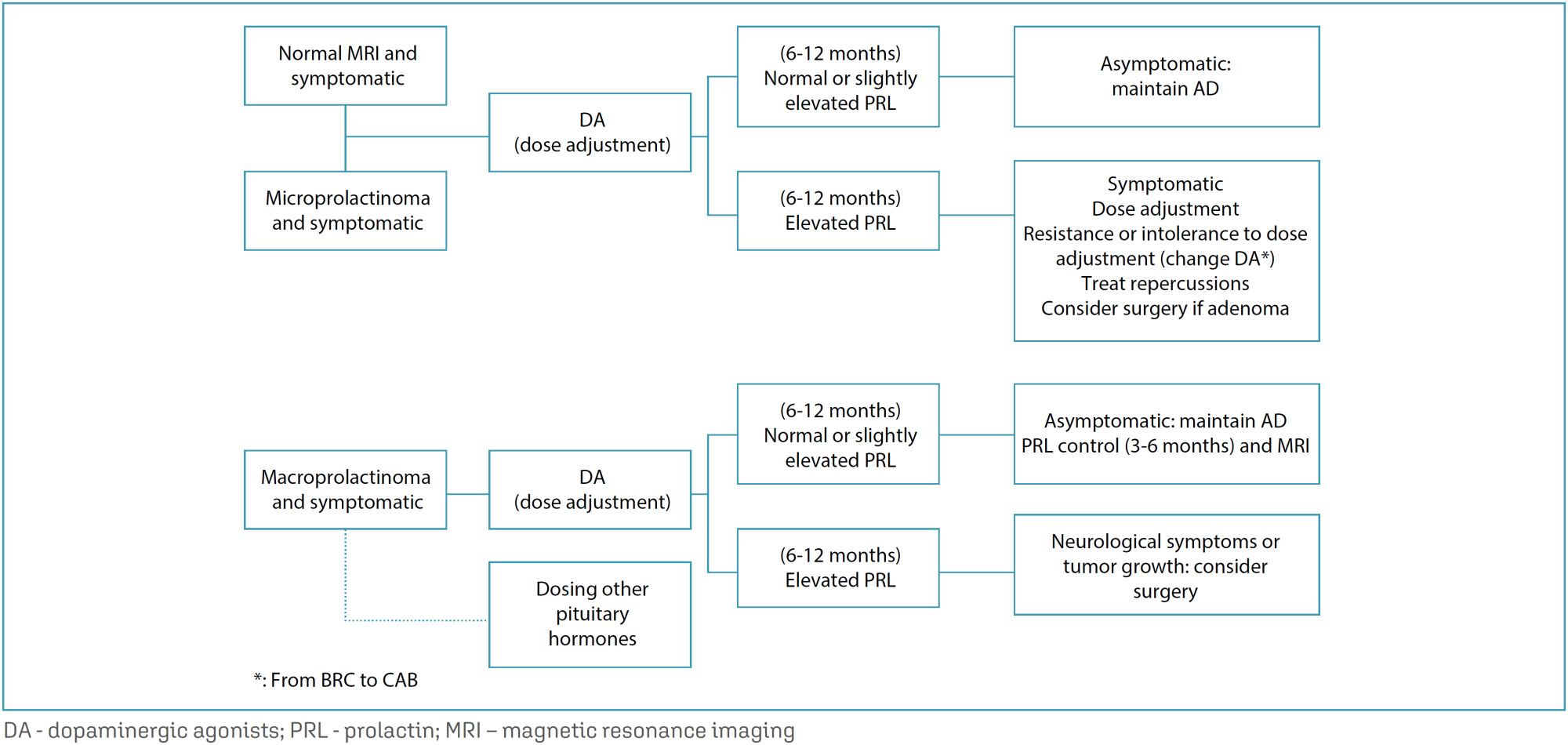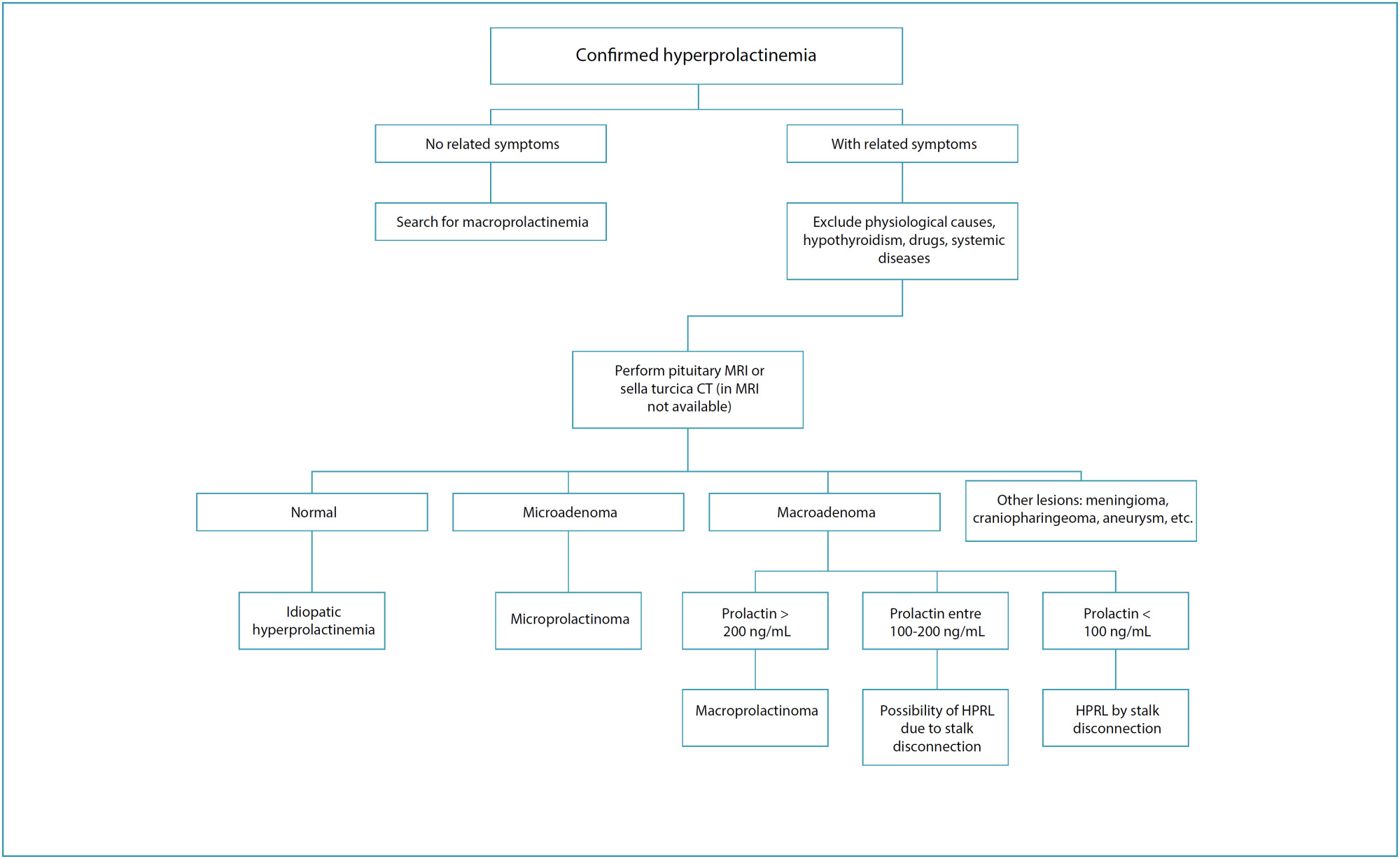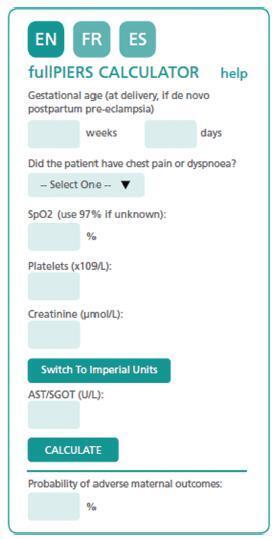-
Original Article04-09-1998
Condyloma Acuminatum in Children and Adolescents
Revista Brasileira de Ginecologia e Obstetrícia. 1998;20(7):377-380
Abstract
Original ArticleCondyloma Acuminatum in Children and Adolescents
Revista Brasileira de Ginecologia e Obstetrícia. 1998;20(7):377-380
DOI 10.1590/S0100-72031998000700002
Views132See moreParpose: to analyze the epidemiologic factors, clinical manifestations and forms of treatment of infection with papiloma virus. Method: all cases of condyloma acuminatum in children and adolescents assisted in the period from 1990 to 1995 in the Service of Children and Adolescent Gynecology were revised. We present the following data: age, diagnosis, clinical manifestations, sites of the lesions, transmission modes and treatment. Results: the average age of the 18 studied cases, was 6 years and 11 months (ranging from 2 to 15 years). The most common clinical manifestation was the presence of warts (61.1%). The lesions were located in the vulvoperineal area in 44.4% of the patients, and perianal and vulvar lesions were observed respectively in 27.8% and 22,2% of the cases. It was not possible to confirm the occurrence of sexual abuse or of condyloma lesions in the parents in 66.7% of the cases. Probable sexual abuse (not confirmed) was reported in 2 cases. The basic therapy was chemical cauterization. Conclusions: sexual abuse in children and adolescents with condyloma acuminatum should be investigated in spite of the existence of other transmission ways including auto- or heteroinoculation. The presentation forms at young age differ from those in adults, and thus an appropriate therapy for this is necessary for this population.
-
Original Article04-09-1998
Clinicopathologic Analysis of Vulvar Intraepithelial Neoplasia: review of 46 Cases
Revista Brasileira de Ginecologia e Obstetrícia. 1998;20(7):371-376
Abstract
Original ArticleClinicopathologic Analysis of Vulvar Intraepithelial Neoplasia: review of 46 Cases
Revista Brasileira de Ginecologia e Obstetrícia. 1998;20(7):371-376
DOI 10.1590/S0100-72031998000700001
Views151See moreThe purpose of the present study was to evaluate some epidemiological, clinical and pathological characteristics of the different grades of vulvar intraepithelial neoplasia (VIN), and its relation with the presence of human papillomavirus (HPV). The charts of 46 women with VIN, examined from 1986 through 1997, were reviewed. For statistical analysis the chi² with yates correction when appropriate, and Fisher’s exact tests were used. Regarding the grade of VIN, six women presented VIN 1, six others had VIN 2 and the remaining 34 presented VIN 3. All women presented similar characteristics such as age, menstrual status and age at first sexual intercourse. Women with more than one lifetime sexual partner had a tendency to show more VIN 3 (p = 0.090). Cigarette smoking was significantly associated with the severity of the vulvar lesion (p = 0.031). HPV was significantly more frequent in women younger than 35 years of age (p = 0.005) and in women with multiple lesions (p = 0.089). Although the number of lesions were not related to the severity of VIN (p = 0.703), lesions with extensions greater than 2 cm were significantly associated with VIN 3 (p = 0.009). The treatment of choice for VIN 3 was surgery, including local resection and simple vulvectomy. Eight women relapsed, and only one had VIN 2. We concluded that among women with VIN, cigarette smoking and more than one lifetime sexual partner were associated with high-grade lesions. HPV was more frequent among patients younger than 35 years of age presenting multiple lesions. Women with VIN 3 presented lesions bigger than 2 cm and a high relapse rate, despite the type of treatment applied.
-
Original Article04-05-1998
Estimation of Fetal Weight: Comparison Between a Clinical Method and Ultrasonography
Revista Brasileira de Ginecologia e Obstetrícia. 1998;20(10):551-555
Abstract
Original ArticleEstimation of Fetal Weight: Comparison Between a Clinical Method and Ultrasonography
Revista Brasileira de Ginecologia e Obstetrícia. 1998;20(10):551-555
DOI 10.1590/S0100-72031998001000002
Views110See morePurpose: to assess the validity of fetal weight estimation by a method based on uterine height — Johnson’s rule. Methods: one hundred and one pregnant women and their newborn children were studied. The fetal weight was estimated using an adaptation of Johnson’s rule, which consists of the clinical application of a mathematical model to calculate the fetal weight based on the uterine height and the height of fetal presentation. The estimated weight was obtained on the day of delivery and was compared to the weight observed after birth. This, in turn, was the control of the analysis of validity of the method used. On the same date, a detailed obstetrical ultrasonography (US) was conducted which included the fetal weight, calculated by the use of Sheppard’s tables. This weight, estimated by US, was compared to the birth weight. Results: the results have proven that the clinical estimate used in this study has a similar value to that of the US calculation of birth weight. The accuracy of the clinical method, with variations of 5%, 10% and 15% between estimated and observed weights, was 55.3%, 73% and 86.7%, respectively. Those of the US were 60.7%, 75.4% and 91.1%, respectively. When comparing both sets of figures, values were not different from a statistical standpoint. Conclusion: the clinical evaluation has shown to be accurate, similarly to the US, when calculating the birth weight.
-
04-05-1998
Indice de líquido amniótico em gestantes diabéticas e a qualidade do controle glicêmico na gestação
Revista Brasileira de Ginecologia e Obstetrícia. 1998;20(8):485-485
Abstract
Indice de líquido amniótico em gestantes diabéticas e a qualidade do controle glicêmico na gestação
Revista Brasileira de Ginecologia e Obstetrícia. 1998;20(8):485-485
DOI 10.1590/S0100-72031998000800011
Views65Indice de Líquido Amniótico em Gestantes Diabéticas e a Qualidade do Controle Glicêmico na Gestação.[…]See more -
04-05-1998
Avaliação do grau nuclear da célula maligna da mama como parâmetro de atividade proliferativa tumoral: comparação com a expressão do antígeno nuclear de proliferação celular (PCNA/ciclina)
Revista Brasileira de Ginecologia e Obstetrícia. 1998;20(8):485-485
Abstract
Avaliação do grau nuclear da célula maligna da mama como parâmetro de atividade proliferativa tumoral: comparação com a expressão do antígeno nuclear de proliferação celular (PCNA/ciclina)
Revista Brasileira de Ginecologia e Obstetrícia. 1998;20(8):485-485
DOI 10.1590/S0100-72031998000800010
Views73Avaliação do Grau Nuclear da Célula Maligna da Mama como Parâmetro de Atividade Proliferativa Tumoral: Comparação com a Expressão do Antígeno Nuclear de Proliferação Celular (PCNA/ciclina).[…]See more -
Case Report04-05-1998
Prenatal diagnosis of arthrogryposis multiplex congenita: a case report
Revista Brasileira de Ginecologia e Obstetrícia. 1998;20(8):481-484
Abstract
Case ReportPrenatal diagnosis of arthrogryposis multiplex congenita: a case report
Revista Brasileira de Ginecologia e Obstetrícia. 1998;20(8):481-484
DOI 10.1590/S0100-72031998000800009
Views91See moreArthrogryposis multiplex congenita is characterized by multiple joint contractures present at birth. Prenatal diagnosis is difficult. There are few reports in the literature. Fetal akinesia, abnormal limb position, intrauterine growth retardation, and polyhydramnios are the main findings of the ultrasonographic diagnosis. The authors describe a case of arthrogryposis multiplex congenita ultrasonographically diagnosed in the third gestational trimester. The main findings were absence of fetal movements, polyhydramnios, symmetrical and non-symmetrical fetal growth retardation with marked decrease of abdominal and thoracic circumference, low-set ears, micrognathia, continuous flexure contracture of limbs, internal rotation of the femur, and clubfoot on the right.
-
Original Article04-05-1998
Second-degree family history as a risk factor for breast cancer
Revista Brasileira de Ginecologia e Obstetrícia. 1998;20(8):469-473
Abstract
Original ArticleSecond-degree family history as a risk factor for breast cancer
Revista Brasileira de Ginecologia e Obstetrícia. 1998;20(8):469-473
DOI 10.1590/S0100-72031998000800007
Views138See morePurpose: to evaluate the association between second-degree family history of breast cancer and the risk to develop the disease. Methods: case-control study of incident cases. Sixty-six incident breast cancer cases and 198 controls were selected among women who were submitted to mammography in a private clinic between January 1994 and July 1997. Cases and controls were paired regarding age, age at menarche, at first live birth, at menopause, parity, oral contraceptives and use of hormonal replacement therapy. Results: there was no significant difference between cases and controls regarding all risk factors evaluated, besides second-degree family history. Patients with breast cancer were more likely to have second-degree relatives with breast cancer when compared to controls (OR=2.77; 95% CI, 1.03-7.38; p=0.039). Conclusions: malignant neoplasm of the breast is significantly associated with a second-degree family history of this disease.
-
Original Article07-20-2004
Search for human papillomavirus in samples of normal endometrial tissue and tissue with carcinoma by the PCR technique
Revista Brasileira de Ginecologia e Obstetrícia. 2004;26(4):277-287
Abstract
Original ArticleSearch for human papillomavirus in samples of normal endometrial tissue and tissue with carcinoma by the PCR technique
Revista Brasileira de Ginecologia e Obstetrícia. 2004;26(4):277-287
DOI 10.1590/S0100-72032004000400003
Views126633See moreOBJECTIVE: to compare the prevalence of DNA of human papillomavirus (HPV), in samples of normal endometrial tissue, and tissue with endometrial carcinoma of women submitted to surgical treatment (hysterectomy), or between endometrial carcinoma and benign disease, through the PCR technique. METHODS: this is an observational control-case study where 100 women (50 with endometrial carcinoma and 50 with normal endometrial tissue) were analyzed for the detection of HPV DNA in samples of endometrial tissue kept in paraffin blocks by the PCR technique. The cases of endometrial carcinoma with uncertain primary site of the lesion as well as the cases with previous or current history of pre-neoplasic lesions or carcinoma of the lower genital tract were excluded. Variables as age, smoking habit, endometrial trophism, squamous differentiation and degree of tumor differentiation were also evaluated. RESULTS: the estimated relative risk of the presence of HPV in the endometrial carcinoma and in the normal endometrial tissue was the same. HPV was detected in 8% of the cases of carcinoma and 10% in the normal endometrial tissue. In spite of HPV having been 3.5 times more detected in women with smoking habit in the group without carcinoma, there was no statistical difference. The presence of HPV was also not correlated with the women’s age, endometrial trophism, squamous differentiation and degree of tumor differentiation. The HPV types 16 (5 cases) and 18 (4 cases) were the viruses most frequently found both in the normal endometrial tissue or in the tissue with carcinoma. No oncogenic low risk virus was detected in the samples. CONCLUSION: The same proportion of HPV is present in the endometrial tissue of women with endometrial cancer and with normal endometrium. It could not be demonstrated a possible correlation of DNA of HPV with the development of endometrial carcinoma.
-
FEBRASGO POSITION STATEMENT04-25-2024
Hyperprolactinemia in women: treatment
Revista Brasileira de Ginecologia e Obstetrícia. 2024;46:e-FPS05
Abstract
FEBRASGO POSITION STATEMENTHyperprolactinemia in women: treatment
Revista Brasileira de Ginecologia e Obstetrícia. 2024;46:e-FPS05

-
FEBRASGO POSITION STATEMENT04-25-2024
Hyperprolactinemia in women: diagnostic approach
Revista Brasileira de Ginecologia e Obstetrícia. 2024;46:e-FPS04
Abstract
FEBRASGO POSITION STATEMENTHyperprolactinemia in women: diagnostic approach
Revista Brasileira de Ginecologia e Obstetrícia. 2024;46:e-FPS04

-
FEBRASGO POSITION STATEMENT00-00-2024
Breech birth care: Number 1 – 2024
Revista Brasileira de Ginecologia e Obstetrícia. 2024;46:e-rbgofps1
Abstract
FEBRASGO POSITION STATEMENTBreech birth care: Number 1 – 2024
Revista Brasileira de Ginecologia e Obstetrícia. 2024;46:e-rbgofps1
-
Letter to the Editor04-09-2024
Letter to Editor: In response to existence of SARS-CoV-2 in the peritoneal fluid
Revista Brasileira de Ginecologia e Obstetrícia. 2024;46:e-rbgo24
Abstract
Letter to the EditorLetter to Editor: In response to existence of SARS-CoV-2 in the peritoneal fluid
Revista Brasileira de Ginecologia e Obstetrícia. 2024;46:e-rbgo24
-
FEBRASGO POSITION STATEMENT04-02-2024
Use of hormones and risk of venous thromboembolism
Revista Brasileira de Ginecologia e Obstetrícia. 2024;46:e-FPS02
Abstract
FEBRASGO POSITION STATEMENTUse of hormones and risk of venous thromboembolism
Revista Brasileira de Ginecologia e Obstetrícia. 2024;46:e-FPS02
Views908See moreKey points
•The risk of venous thromboembolism (VTE) is not increased in women using long-acting reversible contraceptive methods (LARCs) with progestogens.
•Oral contraceptives with levonorgestrel or norgestimate confer half the risk of VTE compared to oral contraceptives containing desogestrel, gestodene or drospirenone.
•Progestogen-only pills do not confer an increased risk of VTE.
•Women using transdermal contraceptive patches and combined oral contraceptives (COCs) are at an approximately eight times greater risk of VTE than non-users of hormonal contraceptives (HCs), corresponding to 9.7 events per 10,000 women/years.
•Vaginal rings increase the risk of VTE by 6.5 times compared to not using HC, corresponding to 7.8 events per 10,000 women/years.
•Several studies have demonstrated an increased risk of VTE in transgender individuals receiving hormone therapy (HT).
•Hormone therapy during menopause increases the risk of VTE by approximately two times, and this risk is increased by obesity, thrombophilia, age over 60 years, surgery and immobilization.
•The route of estrogen administration, the dosage and type of progestogen associated with estrogen may affect the risk of VTE in the climacteric.
•Combined estrogen-progesterone therapy increases the risk of VTE compared to estrogen monotherapy.
•Postmenopausal HT increases the risk of thrombosis at atypical sites.
-
FEBRASGO POSITION STATEMENT04-02-2024
Vulvovaginitis in pregnant women
Revista Brasileira de Ginecologia e Obstetrícia. 2024;46:e-FPS03
Abstract
FEBRASGO POSITION STATEMENTVulvovaginitis in pregnant women
Revista Brasileira de Ginecologia e Obstetrícia. 2024;46:e-FPS03
Views875See moreKey points
• The balanced vaginal microbiome is the main factor defending the vaginal environment against infections. Lactobacilli play a key role in this regard, maintaining the vaginal pH within the normal range (3.8 to 4.5).
•Hormonal and immune adaptations resulting from pregnancy influence changes in the vaginal microbiome during pregnancy.
•An altered vaginal microbiome predisposes to human immunodeficiency virus (HIV) infection.
•Bacterial vaginosis is the main clinical expression of an imbalanced vaginal microbiome.
•Vulvovaginal candidiasis depends more on the host’s conditions than on the etiological agent.
•Trichomonas vaginalis is a protozoan transmitted during sexual intercourse.
•The use of probiotics is not approved for use in pregnant women.
-
Review Article09-01-2017
Preeclampsia
Revista Brasileira de Ginecologia e Obstetrícia. 2017;39(9):496-512
Abstract
Review ArticlePreeclampsia
Revista Brasileira de Ginecologia e Obstetrícia. 2017;39(9):496-512
Views650Abstract
The authors review hypertensive disease during pregnancy with an academic and practical view, and using the best evidence available. This disease, which is the most important clinical disease in Brazilian pregnant women, may have its incidence reduced with prevention through the use of calcium and aspirin in pregnant women at risk. Previously, it was a disease that presented with hypertension with proteinuria, but it has now been classified with new clinical parameters besides proteinuria. Morbidity and mortality should be reduced in a continental country such as Brazil using protocols for the early treatment of complications by calculating severe outcomes in preeclampsia. The early treatment of acute hypertension, use of magnesium sulfate and early hospitalization in cases of preeclampsia are concepts to pursue the reduction of our pregnant women’s mortality.
Key-words HELLP syndromeHigh risk pregnancyPreeclampsiapregnancy arterial hypertensionPregnancy complicationsSee more
Search
Search in:
Tag Cloud
Pregnancy (252)Breast neoplasms (104)Pregnancy complications (104)Risk factors (103)Menopause (88)Ultrasonography (83)Cesarean section (78)Prenatal care (71)Endometriosis (70)Obesity (61)Infertility (57)Quality of life (55)prenatal diagnosis (51)Women's health (48)Maternal mortality (46)Postpartum period (46)Pregnant women (45)Breast (44)Prevalence (43)Uterine cervical neoplasms (43)


